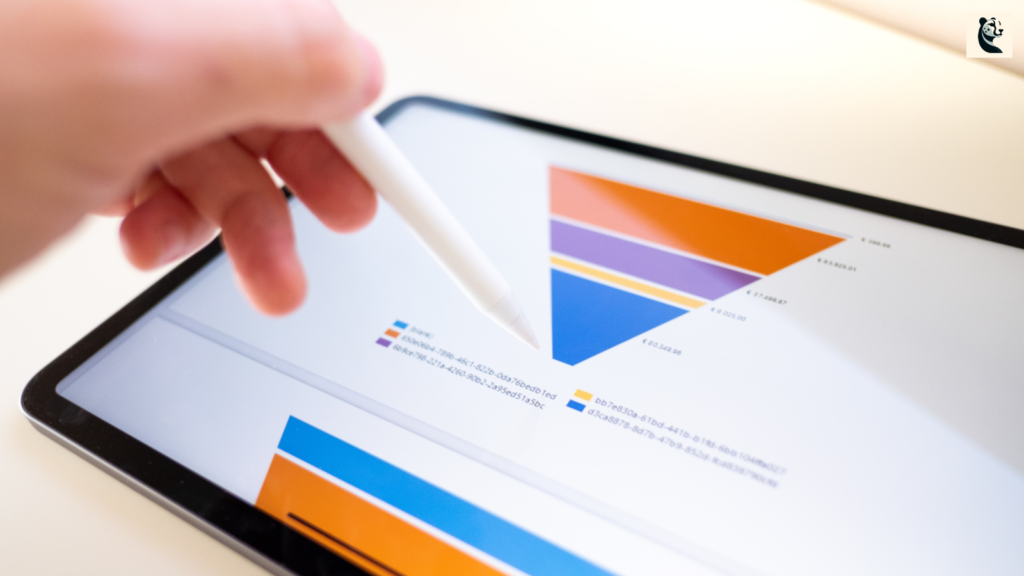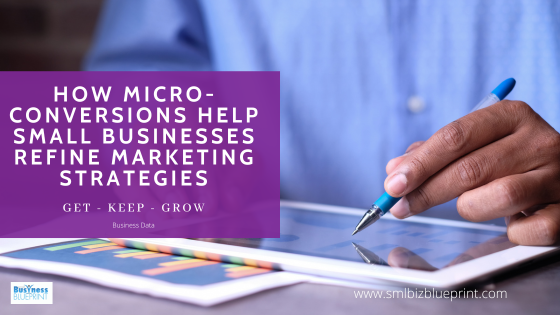Unlocking powerful customer insights has never been more crucial for small businesses striving to refine their marketing strategies.
One often overlooked yet highly effective approach is leveraging microconversions.
Customers’ smaller, measurable actions on their journey toward a final purchase can help marketers gain valuable insights into user behaviour and reveal patterns that broader macro-conversions may miss.
In this blog post, we’ll delve into how micro-conversions can help optimise your marketing funnel by offering actionable data on lead generation strategies and customer journey mapping.
You will discover how marketing automation and analytics tools can streamline micro-conversion tracking, learn essential customer segmentation techniques, and explore tactics for boosting conversion rates through improved landing pages.
By the end, you’ll understand how microconversions can help unlock data-driven decisions and powerful customer insights to propel your small business marketing to the next level.

#1 Understanding Micro-conversion Tracking
Tracking micro-conversions is vital for small businesses seeking deeper customer insights and more efficient marketing strategies. Unlike macroconversions, which measure the final purchase or primary goal, microconversions focus on the smaller actions that lead up to the ultimate conversion.
These actions include newsletter sign-ups, e-book downloads, product page views, and adding items to a shopping cart.
By understanding and tracking these smaller steps, businesses can identify patterns in user engagement and uncover the specific points in their marketing funnel that drive the most value.
What to Track and Why
To set up effective micro-conversion tracking, it’s essential to identify the specific actions that align with your marketing goals.
For instance, if your goal is to grow an email list, consider tracking newsletter sign-ups and engagement rates.
If you aim to boost product sales, monitor actions like product page views, cart additions, or demo requests.
Tools and Implementation:
There are many tools available that can help set up microconversion tracking effectively.
Here are some popular options:
- Google Analytics: Set up goals or events to track microconversions like form submissions, downloads, and specific page views.
- HubSpot: Create custom workflows that identify and score lead engagement through microconversion actions, like webinar sign-ups or email clicks.
- Hotjar: Use heatmaps and recordings to analyse how visitors interact with your website, revealing critical microconversions.
Understanding and tracking microconversions with the right tools is crucial to uncovering actionable insights about your customer’s journey.
Small businesses can refine their marketing strategies by identifying which actions predict final conversions most and ensuring that every step of the funnel is optimised.
#2 Optimizing Your Marketing Funnel
The marketing funnel is the roadmap guiding potential customers from awareness to conversion.
However, businesses may gain valuable insights by carefully analysing the smaller steps along the way. Microconversions offer crucial information to identify bottlenecks and improve customer journey mapping.
Mapping the Customer Journey
A successful marketing funnel relies on understanding the customer journey from start to finish.
To optimise this journey:
Segment Customers: Divide your audience into meaningful groups based on their behaviours, interests, or demographics. This allows for more personalised marketing messages.
Map Out Key Microconversions: Identify crucial microconversions that indicate a customer’s progression through the funnel, such as product page visits, email sign-ups, or webinar registrations.
Analyse Bottlenecks: Review those steps if customers abandon the process at specific points. For instance, a complicated checkout form could be driving potential buyers away.
Personalising the Experience
Personalised marketing campaigns based on customer segmentation can significantly improve conversion rates. According to McKinsey, personalised emails deliver 5 to 8 times the ROI compared to generic messages.
Here are some tips for effective personalisation
Tailor Content to Segments: Provide product recommendations or special offers that match each segment’s interests.
Use Dynamic Content: Implement personalised landing pages, emails, or ads that change based on user data.
Leverage Behavioral Triggers: Follow up with customers based on their actions, such as sending a discount code after they add items to their cart.
Optimising your marketing funnel by tracking micro-conversions can yield powerful insights into where customers are experiencing friction and what motivates them to move forward.
Personalised segmentation, precise mapping, and addressing bottlenecks can help small businesses create a smoother, more efficient path toward the ultimate conversion.
#3 Lead Generation Strategies with Micro-conversions
Generating high-quality leads is the lifeblood of small businesses seeking to expand their customer base. Microconversions offers a data-driven approach to measuring and refining lead generation strategies, providing valuable insights into customer behaviour and preferences.
Identifying Effective Lead Magnets
Lead magnets are offers that entice prospects to provide their contact information in exchange for something of value.
Some practical examples include:
Free Trials or Samples: Provide prospects with a taste of your product/service, reducing their risk before purchase.
E-books and Guides: Share valuable knowledge that solves problems for your target audience.
Webinars and Online Courses: Create educational content that establishes your brand as an expert.
Analysing Micro-conversions:
Monitoring micro-conversions can reveal which lead-generation strategies attract the most engagement.
Here are some essential points to track:
Form Submissions: Monitor how many users sign up for newsletters or download gated content like e-books.
Time on Page: To gauge interest, identify how long visitors spend on critical landing pages.
CTAs and Click-Throughs: Track call-to-action (CTA) button click-through rates on emails or landing pages.
Optimisation Tactics:
Once the data is gathered, implement optimisation tactics to improve lead generation:
A/B Testing: Test different versions of landing pages, CTAs, or email subject lines to see what resonates with your audience.
Simplify Forms: Streamline forms to capture only the most relevant information, reducing user friction.
Segment by Interest: Tailor follow-up content based on which lead magnet users engaged with.
Lead generation strategies are most effective when informed by data. Small businesses can gain valuable insights into customer preferences and optimise their lead generation strategies by tracking and analysing micro-conversions like form submissions or webinar sign-ups.

#4 Marketing Automation and Analytics Tools
Marketing automation and analytics tools are essential for small businesses seeking to streamline micro-conversion tracking and gain actionable customer insights. With the right tools, you can gather valuable data on customer behaviours, identify patterns, and refine your marketing campaigns for better results.
Selecting the Right Tools:
When choosing marketing automation and analytics tools, consider the following features:
Custom Tracking and Reporting: The tool should offer customisable reports and allow tracking of specific microconversion goals, like email sign-ups or landing page clicks.
Integration with Other Platforms: Ensure the tool integrates seamlessly with your CRM, email, and website platforms.
User-Friendly Interface: Look for tools with intuitive dashboards and easy data visualisation.
Popular Tools to Consider:
Here are some widely used tools for tracking micro-conversions:
- Google Analytics: This versatile platform allows you to set goals, track website traffic, and analyse user behaviour through events and conversion funnels.
- HubSpot: Provides comprehensive marketing automation and CRM features, including lead scoring, email workflows, and detailed analytics dashboards.
- Marketo: Offers robust automation features and personalised messaging tools to track leads and optimise campaigns.
- Hotjar: Visualizes customer behaviour on your website through heatmaps, recordings, and surveys.
Steps for Integration:
Once you’ve selected the right tool, follow these steps to integrate it effectively:
Define Microconversion Goals: Determine which actions are most relevant to your marketing objectives, such as contact form submissions or webinar registrations.
Set Up Tracking: Use tags, pixels, or built-in event tracking features to monitor user interactions across your website and emails.
Analyse and Refine: Regularly review analytics reports, adjusting campaigns based on which micro-conversions lead to the highest engagement or conversion rates.
Marketing automation and analytics tools are vital in microconversion tracking and campaign optimisation. By selecting the right platform and setting tailored goals, small businesses can gain powerful insights to improve their marketing funnel and boost conversions.
#5 Customer Segmentation Techniques
Customer segmentation is a powerful technique that allows small businesses to group their audience based on shared characteristics or behaviours. When combined with microconversion data, segmentation can unlock targeted marketing campaigns that deliver more value and higher engagement.
Why Customer Segmentation Matters:
Segmentation is crucial because it helps businesses:
Personalize Campaigns: Tailor marketing messages and product recommendations based on customer preferences and behaviours.
Optimise Resource Allocation: Allocate marketing resources more efficiently by focusing on the highest ROI segments.
Predict Customer Needs: Anticipate customer demands by analysing the behaviour of different segments, which can lead to better product development and customer service.
Segmentation Criteria:
Effective segmentation requires selecting the right criteria. Here are some common ways to group customers:
Demographics: Factors like age, location, gender, and income provide foundational data for creating broad customer groups.
Behavioural Patterns: Analyze customers’ engagement with your brand, such as frequent website visits, repeat purchases, or specific email clicks.
Psychographics: Group customers based on lifestyle, values, or interests that influence purchasing decisions.
Geographic: Segment by location to cater to region-specific preferences or optimise marketing for local events.
How Micro-conversions Support Segmentation:
Micro-conversions provide specific data points that can enrich customer segmentation:
Lead Score Tracking: Assign scores to leads based on their microconversion activities, like downloading e-books or attending webinars.
Behaviour-Based Segmentation: Track customer actions such as cart additions or form submissions to understand their current stage in the customer journey.
Content Preferences: Analyze which blog posts, videos, or webinars customers interact with to categorise them by interest.
Customer segmentation techniques supported by microconversion data can reveal actionable insights that small businesses can leverage for targeted marketing. Companies can deliver personalised campaigns that maximise engagement and conversion rates by grouping customers based on relevant criteria and behavioural patterns.

#6 Improving Conversion Rates with Landing Page Optimization
A well-optimized landing page can significantly boost conversion rates by capturing leads and driving specific actions like sign-ups or downloads. Micro-conversions are critical in identifying which page elements contribute to these actions and how they can be optimised to deliver better results.
Key Elements of High-Performing Landing Pages:
To improve landing page performance, ensure that the following essential elements are in place:
Clear Call-to-Action (CTA): Use compelling, action-oriented language that leaves no room for ambiguity, like “Get Your Free Guide” or “Start Your Free Trial.”
Headline and Subheading: Craft a headline that speaks directly to the visitor’s needs, followed by a subheading that provides concise supporting information.
Concise Content: Keep the message focused and emphasise the benefits visitors will receive by engaging with your product or service.
Eye-Catching Visuals: Use relevant, high-quality images or videos to draw attention and support the messaging.
Using Micro-conversions to Refine Landing Pages:
Micro-conversions like form submissions, time on page, and click-through rates can indicate how well your landing page is performing and where adjustments are needed:
Form Optimization: If visitors abandon forms midway, simplify them by reducing the required fields and providing progress indicators.
Content Layout: Test different content arrangements to see which results in higher engagement, such as placing customer testimonials near the CTA button.
Personalisation: Offer personalised content or product recommendations based on the visitor’s previous interactions with your brand.
A/B Testing for Maximum Impact:
A/B testing is vital to identifying the most effective landing page variations. Test different aspects like:
CTA Buttons: Experiment with button size, colour, and wording to see which version generates more clicks.
Headlines and Subheadings: Compare different messaging strategies to determine which resonates most with your audience.
Images and Visuals: Alternate between images, videos, or illustrations to see what increases engagement.
Optimising landing pages with clear CTAs, concise content, and relevant visuals is essential for improving conversion rates. By analysing micro-conversions and conducting A/B testing, small businesses can identify the page elements that drive engagement and boost conversions.
Conclusion
Harnessing the power of microconversions offers small businesses a unique and invaluable opportunity to glean actionable insights into customer behaviours and optimise their marketing strategies.
By understanding and tracking smaller actions leading to final conversions, businesses can refine their marketing funnel, improve lead generation, and gain powerful insights into their customers’ journeys.
Implementing marketing automation and analytics tools, segmenting customers effectively, and optimising landing pages are crucial components in building data-driven strategies leading to meaningful growth.
Start by setting clear microconversion goals aligned with your marketing objectives, ensuring every action tracked provides valuable insights. Leverage the right tools to streamline tracking and personalise your customer engagement.
Finally, continuously analyse, A/B test, and refine your campaigns to identify and eliminate bottlenecks while delivering targeted messaging that resonates.
Ready to unlock the potential of microconversions for your small business?
Begin by analysing your current customer journey, setting up goals aligned with your objectives, and choosing the right marketing automation tools to implement them.
By acting on these insights today, you’ll be empowered to build a more efficient marketing funnel and deliver personalised campaigns that drive higher engagement and conversion rates.
FAQs
Q1. What are micro-conversions, and why are they important for small businesses?
A1: Micro-conversions are smaller actions leading to a final conversion, such as signing up for newsletters or adding items to a cart. They provide critical insights into customer behaviours and preferences, allowing businesses to optimise their marketing strategies and refine the customer journey.
Q2. How can small businesses identify the most relevant microconversions to track?
A2: Start by understanding your marketing goals and mapping the customer journey. Identify the smaller steps that indicate a customer’s progression toward a final conversion, like form submissions, product page views, or demo requests. These will vary based on your industry and objectives.
Q3. What marketing automation tools can help with tracking micro-conversions?
A3: Popular tools include Google Analytics, HubSpot, and Marketo. These platforms offer custom tracking features, integration with other systems, and detailed analytics to help monitor and analyse microconversions effectively.
Q4. How do micro-conversions improve lead-generation strategies?
A4: Microconversions reveal which lead magnets and marketing tactics attract the most engagement, enabling businesses to refine their campaigns. Small businesses can personalise their messaging and create more targeted campaigns by analysing form submissions, webinar sign-ups, and other data points.
Q5. What role does customer segmentation play in micro-conversion tracking?
A5: Customer segmentation groups customers based on demographics, behaviours, and preferences. Combining segmentation data with microconversion tracking helps businesses tailor their marketing messages to specific audience segments, leading to higher engagement and conversion rates.
Q6. What A/B testing strategies should be used to optimise landing pages?
A6: Test aspects like CTA buttons, headlines, and visuals to identify which variations drive the most engagement. Experiment with various layouts, colours, and messaging strategies to optimise your landing page for conversions without overcomplicating the customer experience.
Q7. How often should businesses review and refine their micro-conversion tracking strategies?
A7: Regular reviews are crucial to ensure microconversion tracking aligns with current marketing goals. Monthly or quarterly assessments allow businesses to adjust their strategies based on campaign performance, customer feedback, and evolving business objectives.
Other Articles
Empower Your Business: 10 Data-Driven Actions For Small Business
Unlocking Success: How Agile Business Practices Drive Profitability and Sustainability
Strategies for Small Businesses to Thrive in the Digital Age




